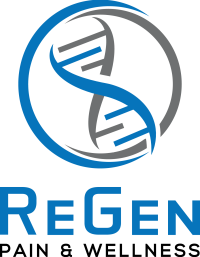Platelet Rich Plasma
Platelet Rich Plasma Therapy in Scottsdale
PRP Explained
Plasma rich plasma is a platelet concentration that is higher than the normal or physiologic platelet concentration present in a healthy complete blood sample. PRP is usually set at 5 times the normal platelet concentration of a whole blood sample. We need to raise the concentration of platelets in blood plasma because this allows a higher concentration of certain bioactive growth factors which have been reported to be instrumental in promoting wound healing amidst other curative advantages.
How PRP Therapy Works
The possible advantages of PRP are believed to rely basically on the internal properties and an interaction between the growth factors supplied in higher concentration through injection. The beneficial growth factors are endothelium growth factors derived from platelets, vasculo-endothelial growth factors, insulin-like growth factor-1, transforming growth factors-β, fibroblast growth factors and epidermal growth factors. Complex interplay of these growth factors and adhesive protein factors like vitronectin and fibronectin are factors responsible for the advantages of platelets rich plasma therapy which includes the wound healing response, removal of tissue debris, collagen synthesis, cell proliferation, formation of extracellular matrix, bone cell formation and the long regenerative process of chemotaxis.
Different categories of platelet concentration preparations have been recognized and they include:
- Pure platelet rich plasma
- Leukocyte platelet-rich fibrin clot
- Platelet leucocyte rich plasma
- Pure platelet-rich fibrin clot
Some factors like the intensity and duration of centrifugation can give rise to different concentration levels and compositions of platelet. However, each of the concentrations and compositions obtainable has different effects on biological systems and also different possible uses.
Clinical Applications
Platelet rich plasma have been successfully applied in regenerative and healing medicine in core areas of bone healing in oral maxillofacial surgery, postoperative repair of rotator cuff in orthopedic surgery and postoperative wound healing. The positive outcomes of these clinical applications of PRP therapy have triggered its application in the outpatient clinical setting of sports medicine. This is in an attempt to bring more effective solutions for conditions like chronic tendinopathies. In recent times, PRP therapy have also been used in a collaborative setting that has to do with a musculoskeletal radiologist that renders assistance in diagnosis, MRI-guided PRP injection and follow up.
The process of wound healing
involves a convoluted process often composed of three overlapping stages which are: First, inflammation, followed by proliferation and finally, tissue remodeling. Once there is an occurrence of tissue injury, there is a formation of a hematoma at the tissue damage site. Platelets begin to adhere to the exposed collagen brings about a clot at the site and the inflammatory stage of wound healing kicks off. The first stage starts with the platelets activation causing a release of hemostatic and bioactive growth factors. With each released factor playing a codependent but unique function in the initial stage of the extrinsic and intrinsic pathways of the clotting cascade. Neutrophils and macrophages migrate to the wound site in a matter of hours to ward of infection and also mop up tissue debris by phagocytosis. In a matter of 2-3 days of tissue damage, the proliferative stage of wound healing kicks off. This stage is characterized by deposition of collagen, angiogenesis, formation of granular tissues, growth of epithelial tissues, and contraction of the wound surface. At the final stage which spans from weeks to months after tissue damage is the stage of remodeling which involves the maturation of collagen and the death of excess sells.
With PRP therapy, this process of wound healing that would span for a period of weeks to months will become considerably faster because the factors and substances responsible for each stage of healing are supplied in high concentration, speeding up the process.



